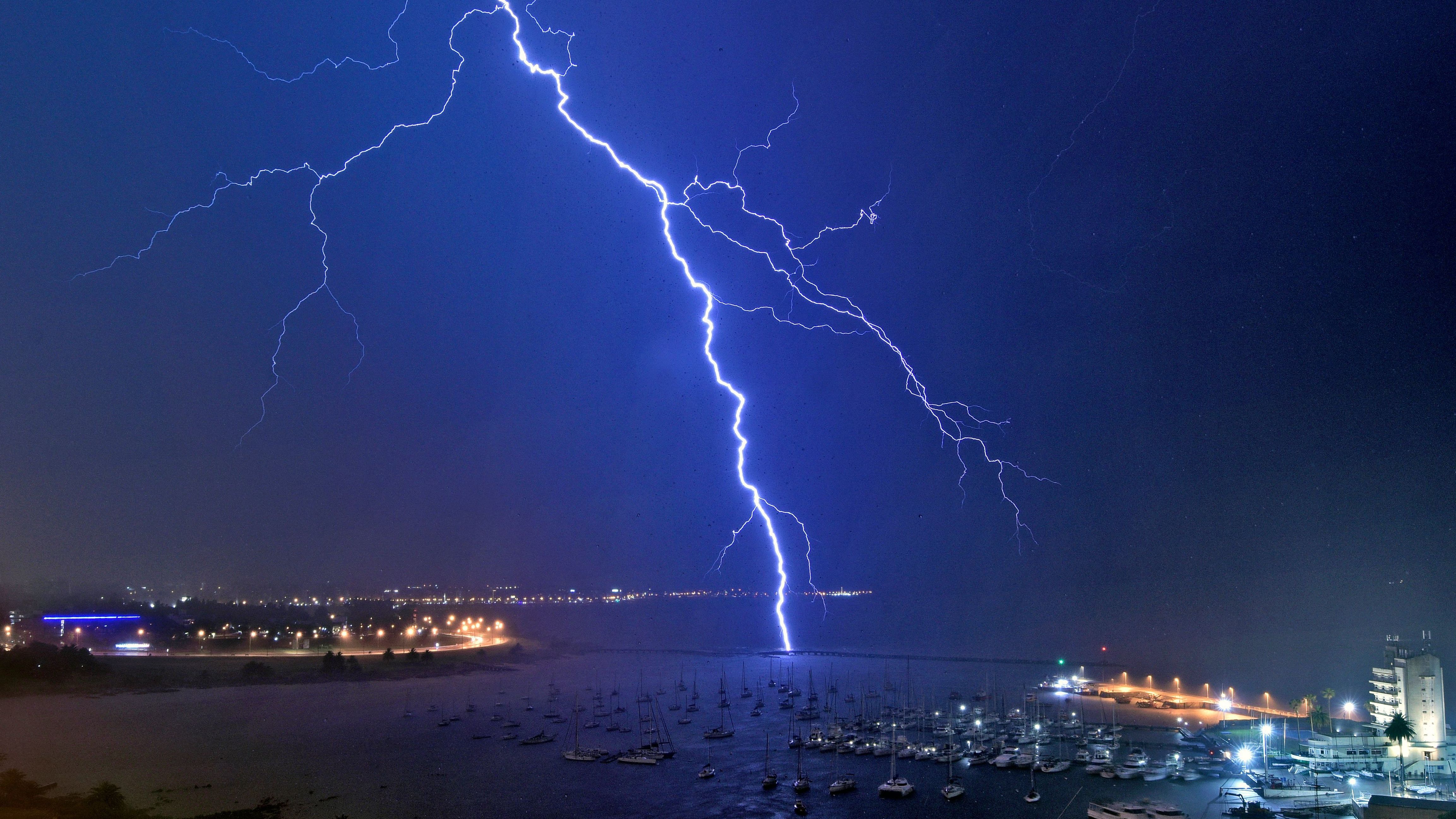 Enlarge this image A lightning bolt strikes near the Uruguayan Yacht Club during a thunderstorm in Montevideo in November 2021.The year before, the Americas saw two record-breaking megaflashes of lightning.Mariana Suarez/AFP Mariana Suarez/AFP via Getty Images
Enlarge this image A lightning bolt strikes near the Uruguayan Yacht Club during a thunderstorm in Montevideo in November 2021.The year before, the Americas saw two record-breaking megaflashes of lightning.Mariana Suarez/AFP Mariana Suarez/AFP via Getty Images
A lightning bolt strikes near the Uruguayan Yacht Club during a thunderstorm in Montevideo in November 2021.The year before, the Americas saw two record-breaking megaflashes of lightning.
Mariana Suarez/AFP via Getty Images A pair of megaflashes of lightning over North and South America have set new records for flash distance and duration, according to the World Meteorological Organization.
Both flashes occurred in 2020.
Parts of the southern U.S.saw the longest lightning flash by distance on April 29.
The flash covered a horizontal distance of about 477 miles — roughly equivalent to the distance between New York City and Columbus, Ohio, according to an announcement by the WMO on Tuesday .
In June 2020, South America experienced a lightning flash of record-breaking duration.The flash lasted about 17 seconds and developed through a thunderstorm over Uruguay and northern Argentina, the WMO said.
Prior to these records, a megaflash in Brazil held the record for the longest flash by distance, at about 441 miles.
A 16.73-second megaflash in Argentina, recorded in March 2019, held the record for the longest duration.
“These are extraordinary records from single lightning flash events,” said professor Randall Cerveny, rapporteur of weather and climate extremes for WMO.”It is likely that even greater extremes still exist, and that we will be able to observe them as lightning detection technology improves.”
Researchers used space-based technology to measure the duration and distance of the megaflashes.Previous technology relied on ground-based lightning mapping networks, which scientists say are limited.
With the space-based technology, researchers are able to obtain “excellent measurements” of the many facets of lightning, said lead author Michael J.Peterson.
“Now that we have a robust record of these monster flashes, we can begin to understand how they occur and appreciate the disproportionate impact that they have,” Peterson said..
